Silk Factory in Hoi An, Vietnam
Alex Rangman (many would know Alex from some of the Yahoo groups) and I visited Vietnam in April this year and of course we visited many silk and embroidery factories.
During our trip I took many photos and a movie with Alex showing you beautiful silk and also the most exquisite embroidery, please click on the movie below to see the silk and embroidery, below is also photos which might interest some of you of the process of making silk
Silk is the most beautiful of all natural fibers. It is also very strong, even at its finest, when it is almost invisible. It is unlike any other fiber used to make fabrics, for it is neither grown in a field or on an animal. It is not manufactured in a factory. A caterpillar produces the silk fiber, spinning it out of its mouth, using tiny fore-legs to place the silk where it should go.
Since mankind discovered the wonder of the silkworm's floss, it has been used for the most expensive of garments.
The process of making silk has not changed very much in the thousands of years since the silkworm's thread was first used, in ancient China.
Silk making in Hoi An, Vietnam

The silkworm eating mulberry leaves on a bamboo tray, this is the early stage of the silkworm
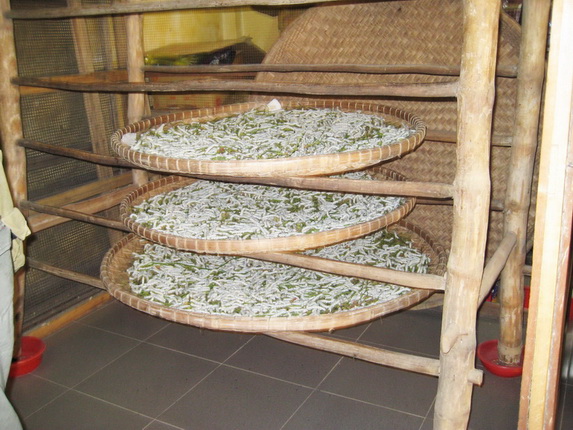
The silkworms grow quickly, as do their appetites. By the time they are about three weeks old, they need to be fed every day.
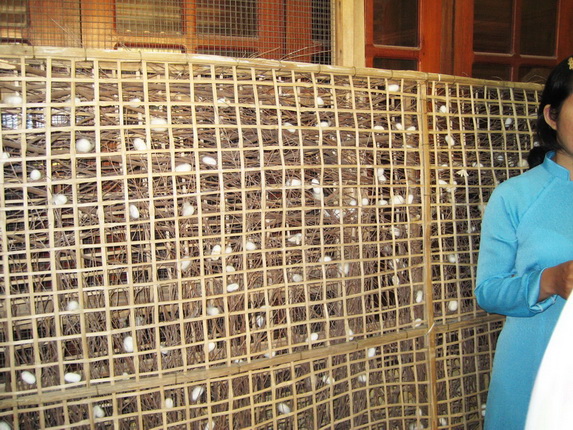
At about twenty-eight days of age, some of the silkworms start to spin silk. These silkworms are immediately transferred to clean twigs and bamboo racks containing the cocooning structures, where they soon spin their cocoons.
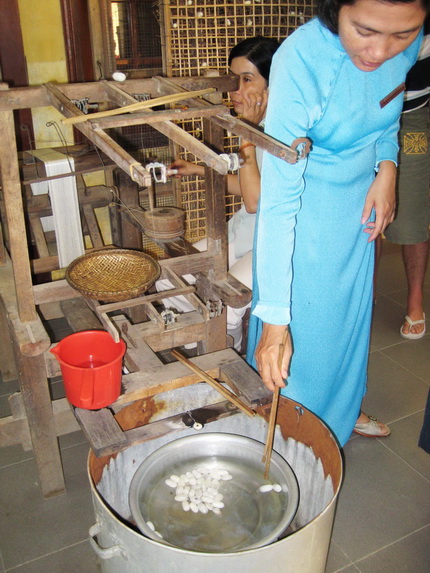
In order to prevent the moth from emerging from the cocoon, thereby cutting many of the fibers, the cocoons are baked at 200 degrees (F) for thirty minutes to kill the chrysalis inside. This is done five days after the cocoon was started, in order to maximize the amount of silk recovered
When ready to unreel the cocoons, she fills a pot about half full with clean water and heats it to near boiling, placing the cocoons in the water at this time. After waiting a few minutes, one fishes a cocoon out of the water with a chopstick or other smooth implement, placing it on a smooth cloth that lies across a folded towel. The end of a strand is found and gently pulled on, slowly releasing the strand from the cocoon. This process has remained in use, virtually unchanged, since the earliest days of sericulture
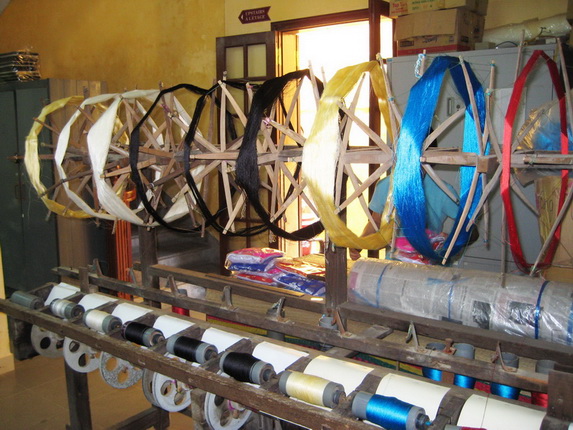
Making of silk thread
Spinning the silk is easy once the silk has been well-processed, and can be done almost anywhere, as long as there is not a noticeable breeze or draft in the area. Unlike many other fibres, silk is light enough that even a slight breeze can give the loose thread a life of its own! Once the spindle becomes full it is time for the next step, dyeing.
Silk takes dyes better than any other natural fibre
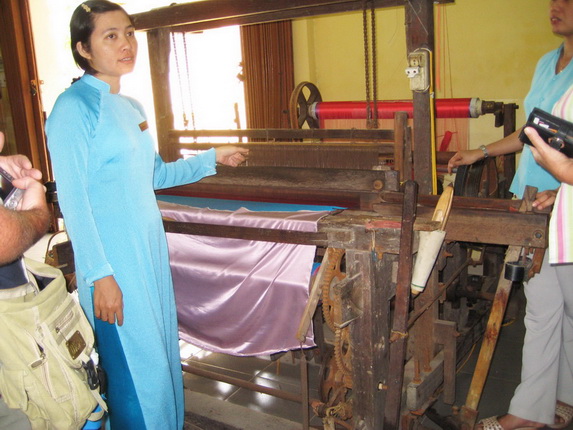
Making the silk blue for fabric

Close up of the silk fabric being made
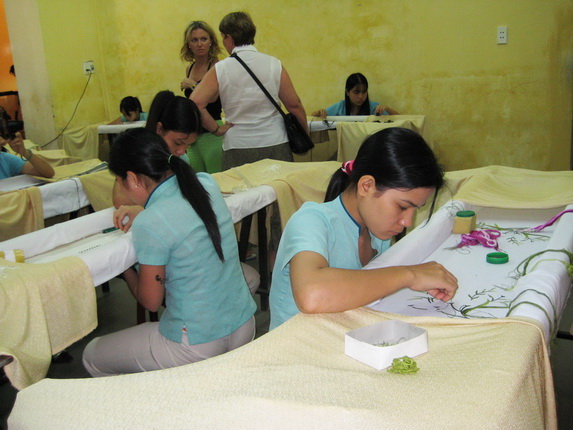
The young girls in the next room from where the silk was thread and fabric was produced, making their beautiful embroideries
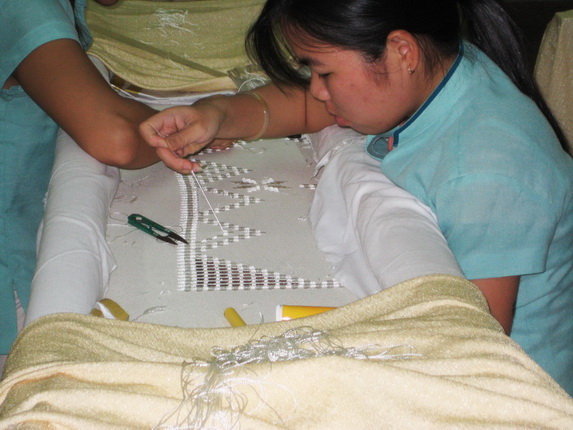
We could have been here all day watching these young girls working, just exquisite work, we were so fortunate to see the works in progress
The following photos are of just a few of the embroideries we saw.
All the work is done on silk fabric using silk thread
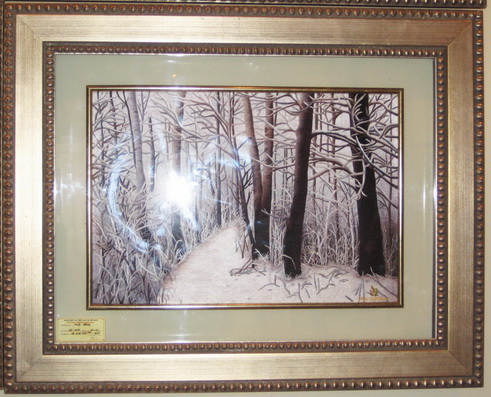
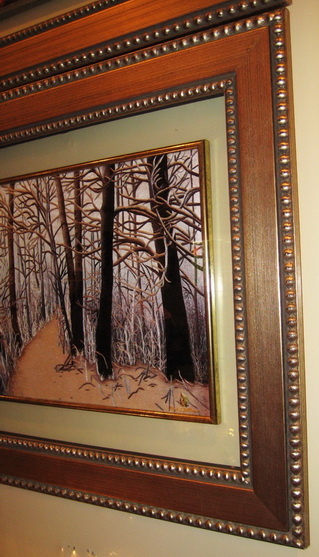
Side view of the previous work, as I could see I was having problem with the flash
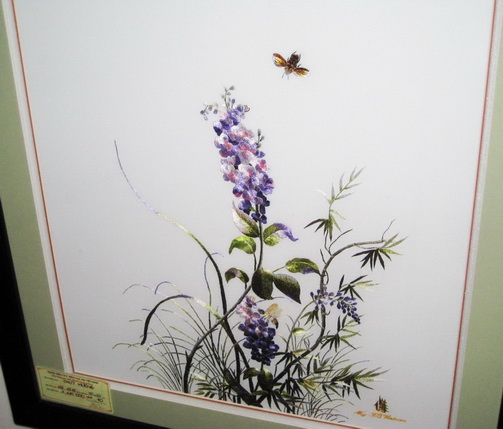
Unfortunately the photo does not show you the actual detail involved in this embroidery
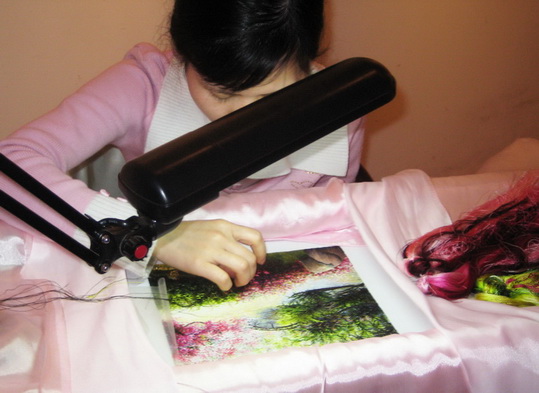
Young girl working on silk fabric and silk thread
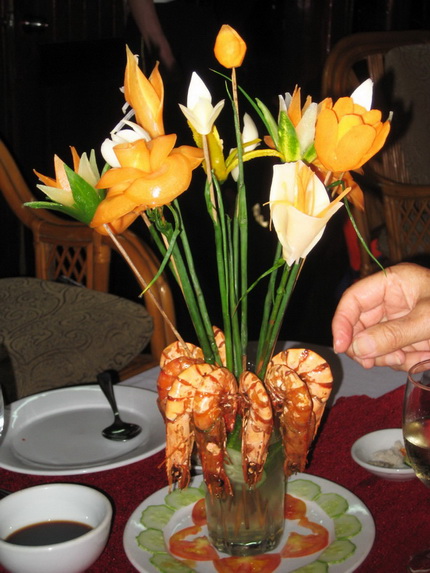
I know this photograph is not about embroidery, but I just had to take a photo of this. We were having dinner on a junk where we stayed overnight on Ha Long bay, they are not actual flowers, they are vegetables, the chap that made our meals just whipped it up in no time, can you believe it!!!
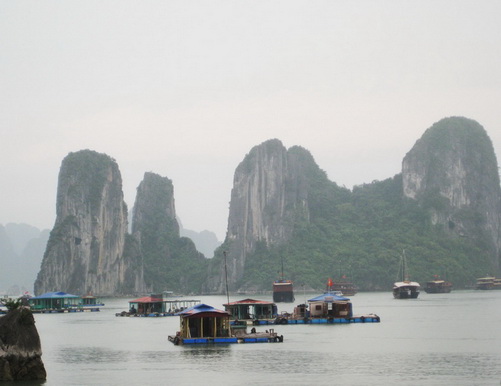
Ha Long Bay is a UNESCO World Heritage site located in Quảng Ninh province, Vietnam. The bay features thousands of limestone karsts and isles in various sizes and shapes.